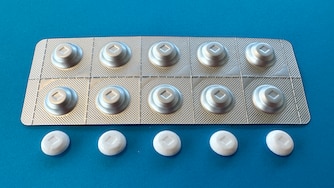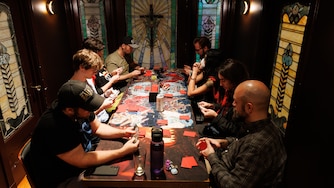Lauren Crouch first noticed the blue hoses draped over large orange traffic cones around Old Goucher early in the spring, discharging water all day and all night. Sitting across from a Save A Lot grocery store, she could spot three of these spigots within one block of the steps where she was sipping on a bottle of strawberry iced tea in Wednesday’s brutal summer heat.
“I feel like it’s a sin to be wasting all that water,” Crouch, 64, said. “There’s gotta be a better way.”
The makeshift pipes have been popping up throughout the city to keep clean water flowing to Baltimore faucets while improving its nearly-century-old water system, authorities said.
When the city digs below ground to replace or refurbish water mains, workers often install temporary piping that runs above the ground to keep water running to homes while the mains are under construction. The makeshift spigots pouring water onto the street are part of a process called “flushing,” which helps clean the temporary pipes by washing out any dirt and debris, according to experts.
“The contractor is flushing the temporary bypass system, which is installed so residents do not experience water service interruption while the main is replaced,” said Jennifer Combs, a spokesperson for the Department of Public Works.

The mains that Crouch saw on Maryland Avenue are part of one of several DPW project to improve water mains throughout the city, with the goal of replacing or rehabilitating 15 miles of water mains each year.
Frank Taciak, the owner of a local company that works on residential water pipes, said residents shouldn’t worry if they see these water-spouting contraptions.
“It’s a way of cleaning the pipes,” he said. “There may be some sediment in the pipe and you want to run that water through the pipe, so [the sediment] runs onto the street.”
Baltimore residents won’t see this discharged water show up on their bills, Combs said. Residents are only billed for water that runs through the meter attached to their home’s water line.
But much of Baltimore’s water supply never makes it to homes or businesses. In fiscal year 2020, more than a quarter of the city’s water was lost to water main breaks, open fire hydrants and leaks. The city calls this “non-revenue water.”
Steve Hanke, a Johns Hopkins professor who has studied the economics of Baltimore’s water system and advised President Ronald Reagan on water policy, likened the water spewing onto the pavement to chocolate bars falling out of a candy manufacturers’ truck.
“You can’t eventually make people pay for candy they never received,” Hanke said. “But with a water system, they can make you pay for water you never received because they will pass the cost on to the taxpayer.”
Still, as long as water main replacement project continues throughout the city, you can expect to see these spigots on the side of roads. There are at least 16 projects underway to replace or rehabilitate water mains all over Baltimore, touching nearly every corner of the city.





Comments
Welcome to The Banner's subscriber-only commenting community. Please review our community guidelines.